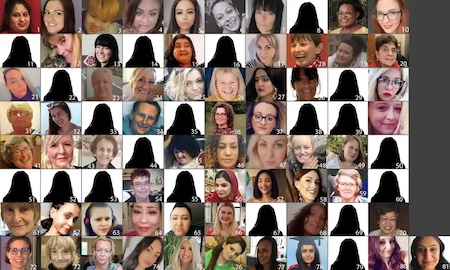Since Sarah Everard’s brutal murder, only one thing has changed – the death toll People said something had changed with the awful death of Sarah Everard. But the message certainly hasn’t reached the men who rape, harm and kill women. And I can’t see a difference in the government, police, Crown Prosecution Service or the judiciary either. Since Sarah Everard was abducted, raped, murdered and, in the words of her mother, “disposed of as if she were rubbish”, at least 81 other UK women have been killed in circumstances where the suspect is a man. It is absolutely ludicrous that we know this because of my work, a random northern woman in east London, not the government, not the National Police Chiefs Council. Each of these women will have died in terror and pain, just like Sarah. Each one leaves behind grieving friends and family for whom the loss will last a lifetime. It is significant that Sarah was killed by a serving police officer, but I wish the suffering of these women, and the anguish of those who loved them, were not accepted as normal and inevitable. Men’s fatal violence against women cuts across all sections of society, across ages, class and ethnicity. But some women are afforded more empathy than others. Some are more likely to be disbelieved, to be blamed, to be sent away without the help they need. This appalling hierarchy of victims continues into death. It is almost always the young, conventionally attractive, middle-class white woman killed by a stranger, the perfect victim, that makes the front pages. Not the 50-year-old from a council estate in Leicestershire, killed by the father of her children after a 30-year marriage, where her life and dignity have been chipped away, little by little, every day. Perhaps until she found the strength to leave him and he chose to exercise the ultimate form of control. I want every woman’s death to be a reason for soul-searching. I started Counting Dead Women in January 2012, after the murder of 20-year-old Kirsty Treloar, who had been referred to the charity of which I am chief executive, when she was trying to leave her violent boyfriend. A year and a half later, Clarrie O’Callaghan and I had our first conversation, one that would lead to the development of the Femicide Census. We’ve made Freedom of Information requests going back to 2009 about men’s fatal violence against women. From this we’ve identified that 62% of women killed by men are killed by a partner or ex-partner, and that at least a third of these women were in the process of leaving, or had left him; that teenage girls, as well as women in their 80s or 90s, can be killed by men who were supposed to love them; that 92% of women who are killed by men are killed by someone they know. One in 12 is a woman who is killed by her son. Black women are disproportionately victimised, yet more likely to receive a sub-standard response from state agencies. And Sarah Everard was the 16th woman to be killed by a serving or former police officer since 2009. Has something changed since Sarah Everard was abducted, raped, murdered and disposed of by Wayne Couzens? The government has published the third national strategy to tackle violence against women that doesn’t name men as the perpetrators in the title. It names high-profile victims in the introduction but doesn’t name femicide. It is a folly if we set an ambition to end men’s violence against women and girls if we cannot name women as disproportionally the victims and men as overwhelmingly the perpetrators of sexual and domestic violence and abuse. The Observer and Femicide Census’s End Femicide campaign is important. The media plays a huge role in shaping people’s attitudes and understanding and it is to the Observer’s credit that it is looking at femicide in depth. Femicide is not just homicide of women by men, it’s about how and why women are killed and how this is different from when men are killed. Understanding this is a key step towards ending femicide. The 81 Women allegedly killed by men since the murder of Sarah Everard: 1. Geetika Goyal, 29, died 4 March[Data compiled by Karen Ingala-Smith on her blog Counting Dead Women] Source URL |
